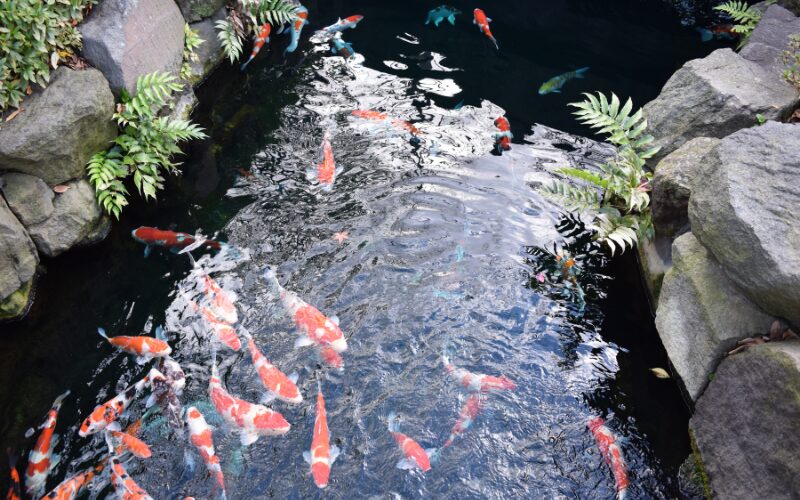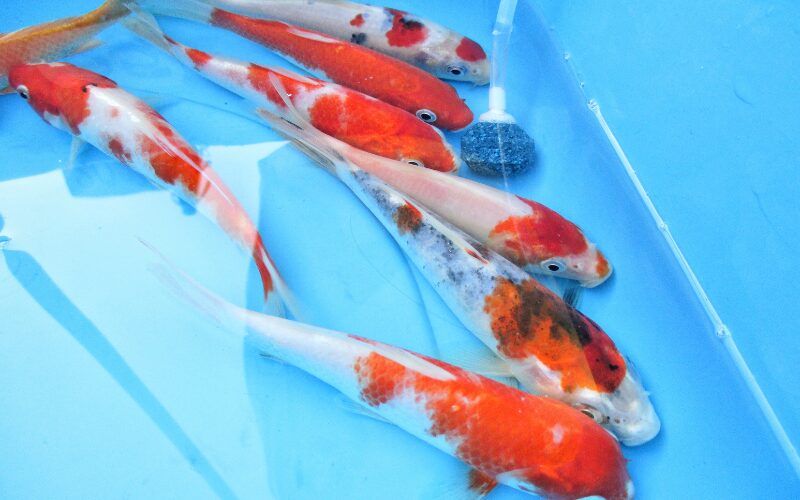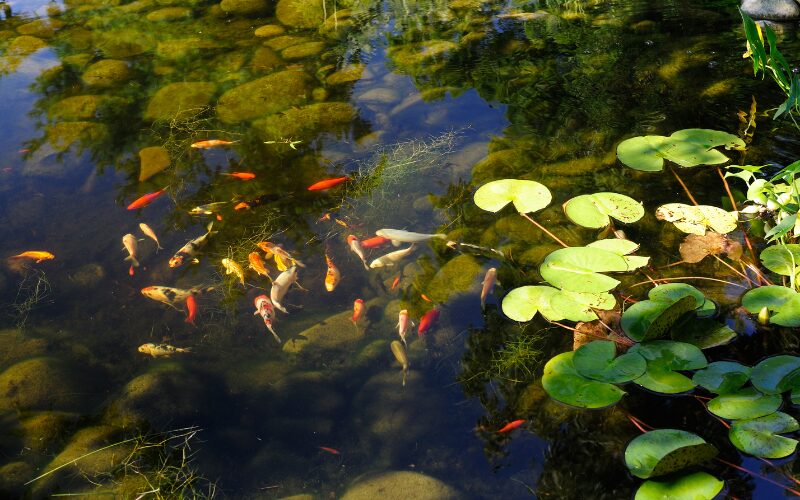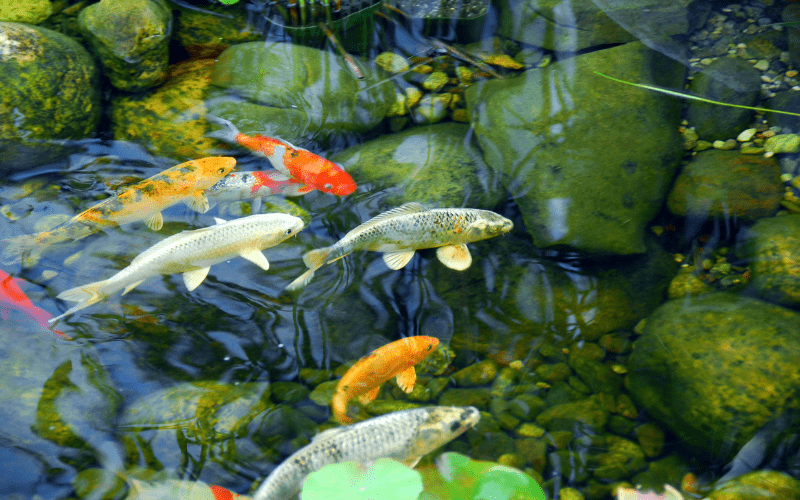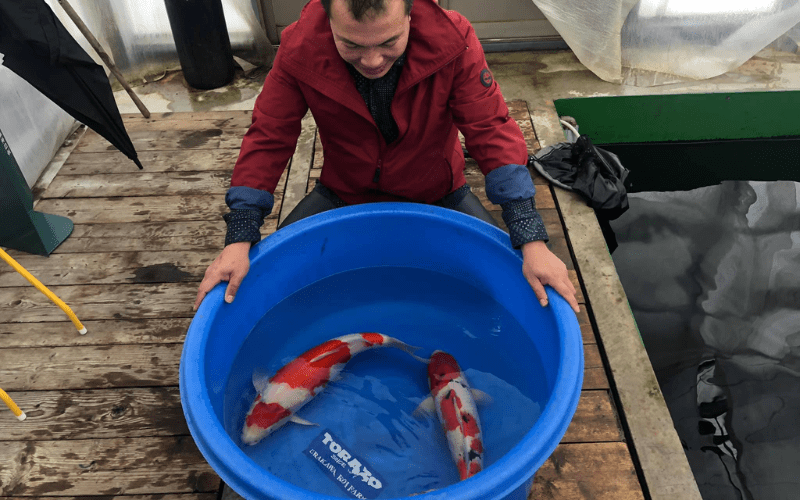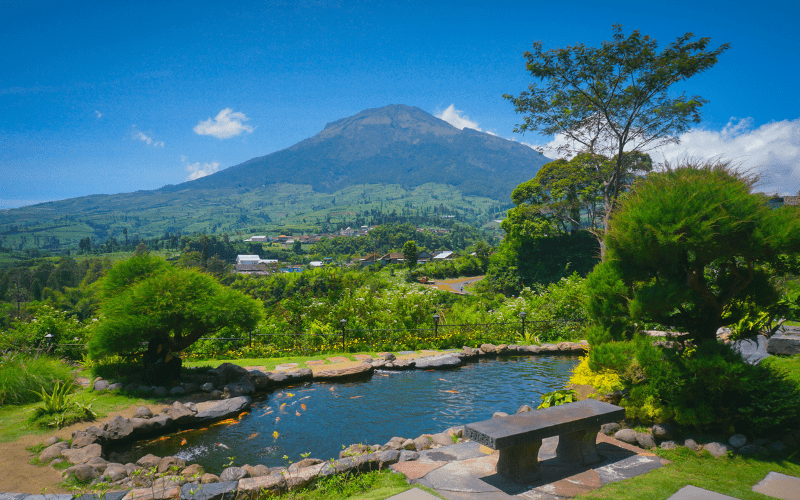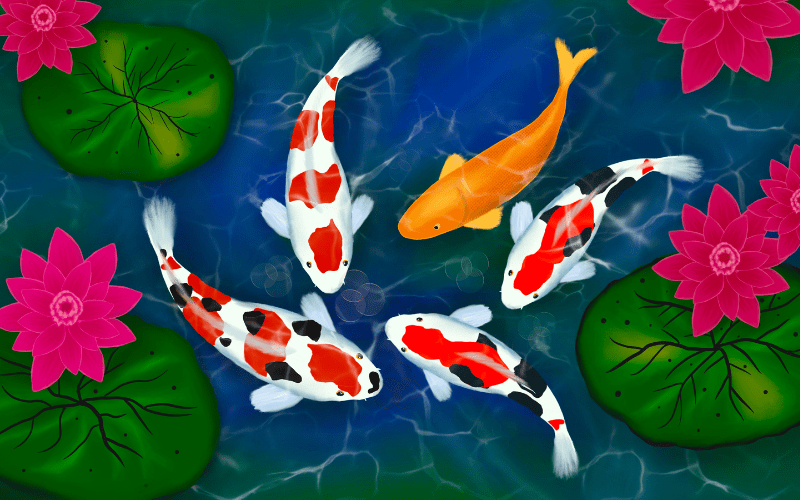Feeding koi fish properly is essential to their health, growth, and vibrant coloration. This blog post explores the best practices for feeding koi fish, ensuring they receive optimal nutrition throughout the year. By understanding their dietary needs, choosing the right types of food, and following proper feeding techniques, you can maintain a thriving and beautiful koi pond.
Understanding Koi Fish Dietary Needs
Koi fish have specific nutritional requirements that vary with the seasons. Ensuring a balanced diet with the right proportions of proteins, fats, carbohydrates, vitamins, and minerals is crucial for their overall health.
Nutritional Requirements
- Proteins: Essential for growth and muscle development, especially in young koi.
- Fats: Provide energy and support healthy skin and scales.
- Carbohydrates: Supply energy but should be limited to avoid excess fat accumulation.
- Vitamins and Minerals: Support immune function, bone health, and metabolic processes.
Seasonal Dietary Changes
- Summer Feeding: Higher metabolism requires more protein-rich food.
- Winter Feeding: Reduced metabolism; feed sparingly with wheat germ-based food or fast if temperatures drop below 50°F (10°C).
Types of Koi Fish Food
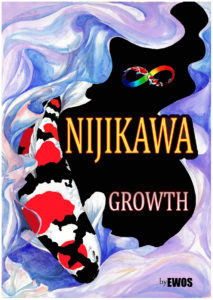 Choosing the right type of food is critical for meeting the nutritional needs of your koi. Both commercial and homemade options are available, each with its benefits.
Choosing the right type of food is critical for meeting the nutritional needs of your koi. Both commercial and homemade options are available, each with its benefits.
Commercial Koi Food
- Pellets: The most common type, available in various sizes and formulations.
- Flakes: Suitable for smaller koi or young fish, though less nutritious than pellets.
Homemade Koi Food
- Ingredients to Include: Shrimp, fish, vegetables, and gelatin to bind the mixture.
- Preparation Tips: Blend ingredients and form them into small balls or cakes; freeze them for later use.
Natural Food Sources
- Insects: Earthworms, crickets, and other small insects can be a natural supplement.
- Plants: Duckweed and other aquatic plants provide natural nutrition.
Feeding Techniques and Schedules
Proper feeding techniques and schedules help prevent overfeeding and ensure koi receive consistent nutrition.
How Much to Feed
- Feed only what koi can consume in 5 minutes to avoid waste and water pollution.
Frequency of Feeding
- Summer: 2-4 times per day due to higher metabolism.
- Spring and Fall: Once or twice per day as metabolism slows.
- Winter: Once every few days or not at all if the water temperature is very low.
Best Times of Day to Feed
- Early morning and late afternoon when koi are most active.
Avoiding Overfeeding
- Overfeeding leads to poor water quality and health issues like obesity and organ damage.
Special Considerations
Different life stages and conditions require specific feeding adjustments.
Feeding During Breeding Season
- Provide protein-rich food to support energy needs and egg production.
Feeding Sick or Recovering Koi
- Offer easily digestible food like medicated pellets or softened vegetables.
Dietary Adjustments for Different Koi Sizes and Ages
- Young Koi: High-protein diets for rapid growth.
- Adult Koi: Balanced diet to maintain health and coloration.
Common Mistakes in Feeding Koi
Avoid these common mistakes to keep your koi healthy.
Overfeeding and Its Consequences
- Leads to poor water quality, algae growth, and health problems like fatty liver disease.
Feeding Inappropriate Foods
- Avoid foods high in carbohydrates or fat, as well as human foods that can be harmful.
Inconsistent Feeding Schedules
- Consistency helps maintain koi’s digestive health and water quality.
Seasonal Feeding Tips
Adjusting your koi’s diet to the changing seasons is crucial for their well-being.
Adjusting Diet with Water Temperature Changes
- Warmer temperatures increase metabolism; cooler temperatures slow it down.
Winter Fasting Periods
- Koi can fast during winter when their metabolism is low; this mimics their natural behavior.
Summer Feeding Strategies
- Feed more frequently with high-protein food to support growth and activity.
Benefits of Proper Feeding
Feeding koi properly has numerous benefits.
- Enhanced Health and Longevity: Balanced nutrition supports overall well-being.
- Improved Coloration and Growth: A proper diet enhances vibrant colors and promotes growth.
- Strengthened Immune System: Adequate vitamins and minerals boost immunity against diseases.
Key Points To Remember
- Balanced Diet: Essential for koi health and growth.
- Feeding Frequency: Adjust according to water temperature and koi activity.
- Avoid Overfeeding: Prevents health issues and maintains water quality.
- Seasonal Adjustments: Tailor diet to seasonal changes in metabolism.
Seasonal Feeding Guide for Koi Fish
| Season | Water Temperature | Feeding Frequency | Food Type |
|---|---|---|---|
| Spring | 50-70°F (10-21°C) | 1-2 times per day | Wheat germ, low protein |
| Summer | 70-85°F (21-29°C) | 2-4 times per day | High-protein pellets |
| Fall | 50-70°F (10-21°C) | 1-2 times per day | Wheat germ, low protein |
| Winter | Below 50°F (10°C) | Rarely or not at all | None of the wheat germ |
FAQs
Q: How can I tell if I’m overfeeding my koi? A: If there is uneaten food after 5 minutes or the water becomes cloudy, you are likely overfeeding.
Q: Can I feed my koi human food? A: It’s best to avoid human food, as it can contain harmful ingredients. Stick to koi-specific food.
Q: What should I do if my koi aren’t eating? A: Check water temperature and quality, as poor conditions can affect appetite. Consult a vet if the problem persists.
Conclusion
Proper feeding practices are crucial for maintaining healthy and vibrant koi fish. By understanding their dietary needs, choosing the right types of food, and following appropriate feeding techniques, you can ensure your koi thrive in all seasons. Regularly adjust feeding routines based on water temperature and koi activity to support their overall well-being.
Contact Us
For high-quality koi food and personalized feeding advice, visit our store. Contact us today for more tips on maintaining a healthy koi pond.
Feeding your koi fish properly is an ongoing commitment that pays off in the form of beautiful, healthy fish. Implement these best practices and watch your koi thrive year-round.

